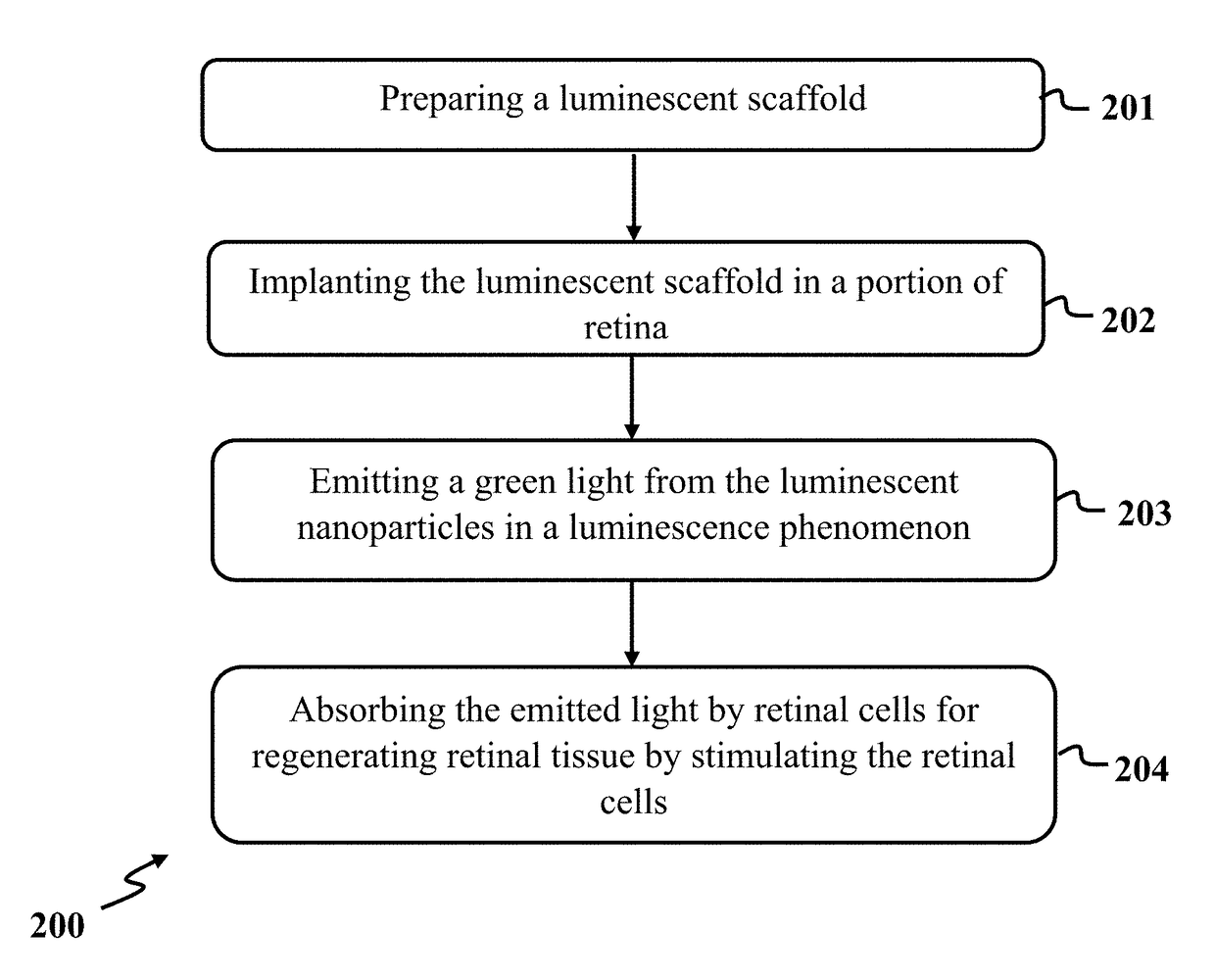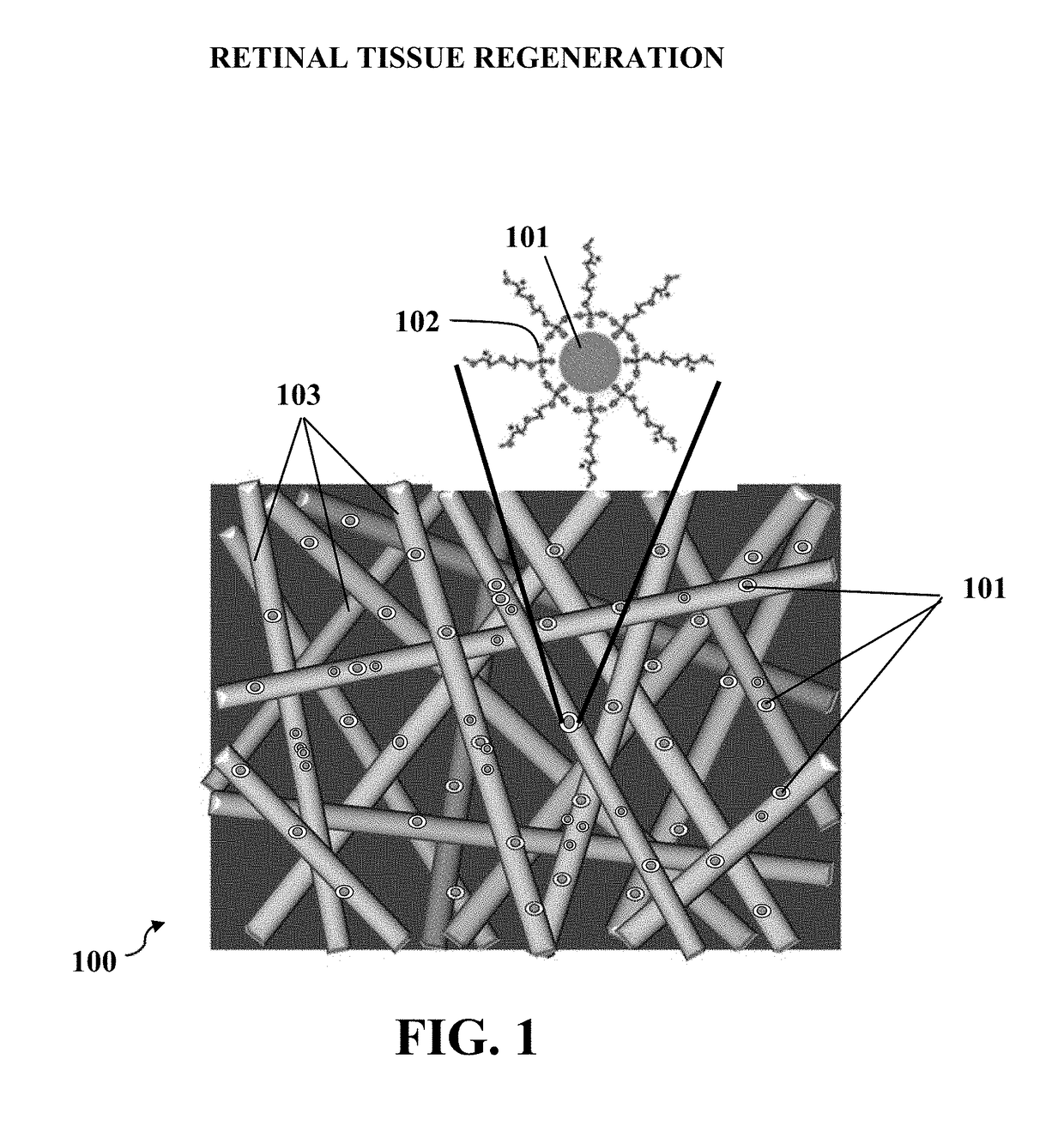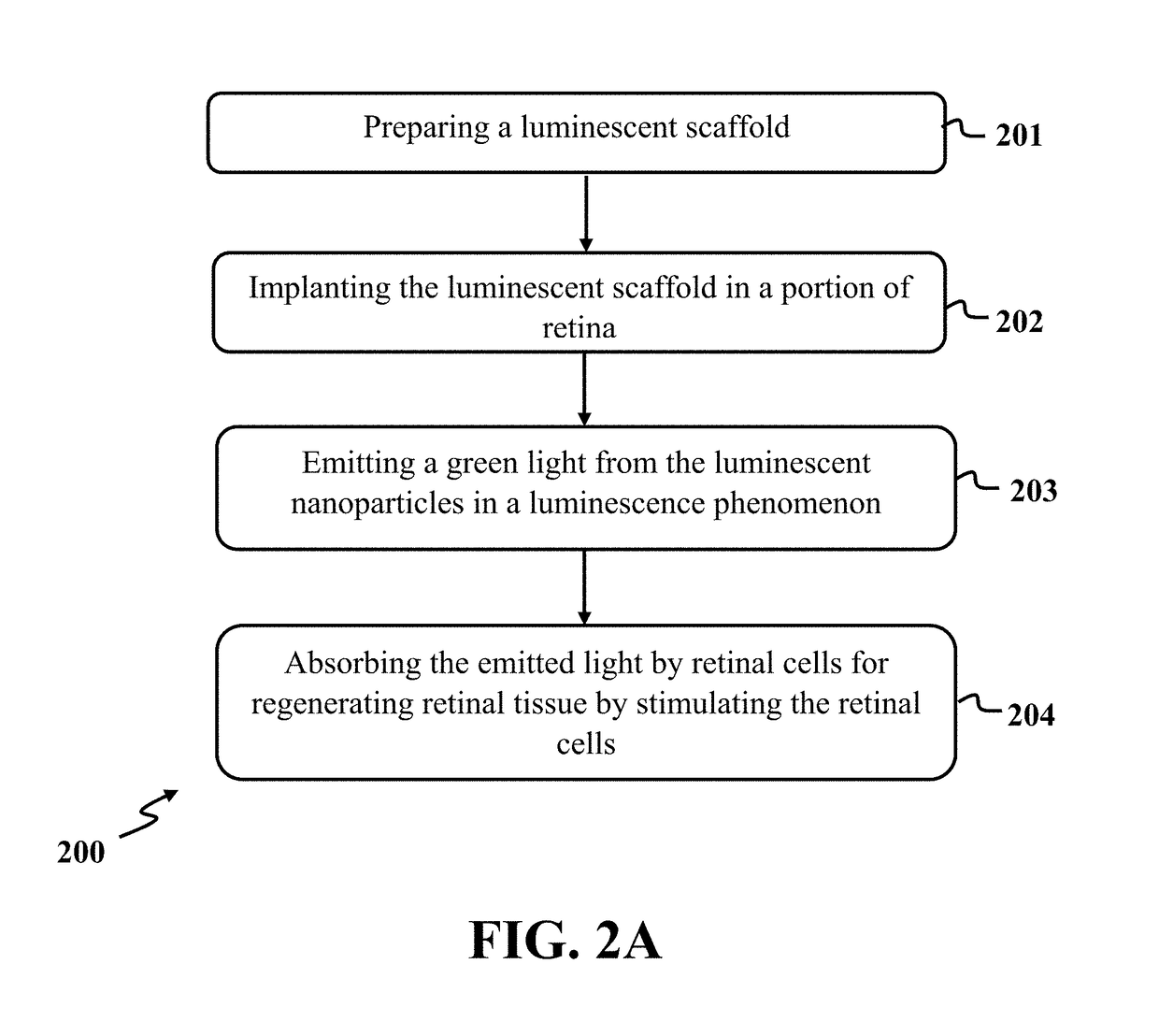Retinal tissue regeneration
a retinal tissue and tissue technology, applied in the field of tissue engineering, can solve the problems of polymeric scaffolds, expected improvement in retinal regeneration, irreversible blindness,
- Summary
- Abstract
- Description
- Claims
- Application Information
AI Technical Summary
Benefits of technology
Problems solved by technology
Method used
Image
Examples
example 1
of Luminescent Nanoparticles
[0079]The luminescent particles may be applied for retinal tissue engineering, for example, retina regeneration; therefore, luminescent particles may be exposed to different cells in retina, and size of the luminescent particles should be same as the cellular size in nanometer scale. Therefore, the sol-gel method was used in this example to synthesize SrAl2O4:Eu2+Dy3+ particles to obtain the particles with a desired size. In this example, SrAl2O4:Eu2+Dy3+ luminescent nanoparticles were synthesized.
[0080]In order to prepare SrAl2O4:Eu2+Dy3+ luminescent nanoparticles with high bright emission and long afterglow, Eu2+Dy3+ co-doped strontium aluminate (SrAl2O4) luminescent nanoparticles were prepared as follows. At first, analytical graded reagents such as aluminum nitrate (Al(NO3)3), strontium nitrate (Sr(NO3)2), dysprosium nitrate (Dy(NO3)3) and europium nitrate (Eu(NO3)3) were dissolved in distilled water with the following molar ratios: (Sr(NO3)2 0.97, Eu...
example 2
on of the Luminescent Scaffold
[0090]In this example, a scaffold with SrAl2O4:Eu2+Dy3+ luminescent nanoparticles was prepared utilizing the following steps. At first, a copolymer of chitosan and polycaprolactone (CS-PCL) was prepared by grafting ε-caprolactone oligomers (PCL) onto hydroxyl groups of chitosan (CS). Therefore, about 2.0 grams of CS, which has about 12 mmol of glucosamine units, and about 20 mL of MeSO3H was inserted to a flame-dried 50 mL flask to form a solution. In order to dissolve chitosan (CS) completely, the solution was stirred for approximately 30 minutes at 45° C.
[0091]After that, about 16.58 grams of ε-caprolactone monomer was injected to the solution to form a copolymer mixture. The copolymer mixture was stirred for about 5 hours under nitrogen atmosphere at a temperature of about 45° C.; then the copolymer mixture was filtered to collect the resulting CS-PCL copolymer. After that, in order to adjust the filtrate pH, the filtrate was added into a solution co...
example 3
nescence Properties of the Luminescent Scaffolds
[0110]In this example, photoluminescence properties of the luminescent nanoparticles and the prepared scaffolds are studied. Determination of photoluminescence properties of PEGylated SrAl2O4:Eu2+Dy3+ luminescent nanoparticles was done using Perking Elmer LS-55 fluorescence spectrophotometer with a 230 V pulsed Xenon source for excitation.
[0111]The samples were irradiated by UV light at a wavelength of 390 nm for 10 minutes prior to the emission measurements. After that, SrAl2O4:Eu2+Dy3+ luminescent nanoparticles were excited by a light beam with a prominent peak at a wavelength of 390 nm.
[0112]The emission spectra show a broad band peak at a wavelength of 512 nm which represents a transition from 4f6 5d1 electron configuration to 4f7 electron configuration of excited Eu2+ ions. While the typical emission peak of the luminescent particles is 520 nm, this shift towards shorter wavelengths, 512 nm, can be explained considering the sol-ge...
PUM
| Property | Measurement | Unit |
|---|---|---|
| Concentration | aaaaa | aaaaa |
| Concentration | aaaaa | aaaaa |
| Concentration | aaaaa | aaaaa |
Abstract
Description
Claims
Application Information
 Login to View More
Login to View More - R&D
- Intellectual Property
- Life Sciences
- Materials
- Tech Scout
- Unparalleled Data Quality
- Higher Quality Content
- 60% Fewer Hallucinations
Browse by: Latest US Patents, China's latest patents, Technical Efficacy Thesaurus, Application Domain, Technology Topic, Popular Technical Reports.
© 2025 PatSnap. All rights reserved.Legal|Privacy policy|Modern Slavery Act Transparency Statement|Sitemap|About US| Contact US: help@patsnap.com



